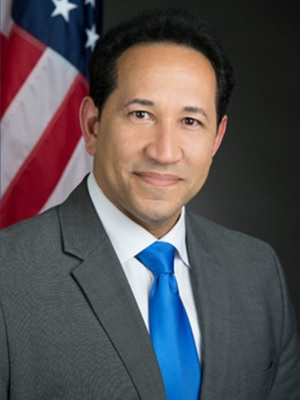2022-11
Ensure Equitable Access to High Quality Care for Persons Living with Sickle Cell Disease
Sponsored by Rep. Carlos González (MA)
Reported to the Caucus by the NHCSL Healthcare Task Force
Rep. Alma Hernández (AZ), Chair
Unanimously ratified by the Caucus on December 1, 2022
WHEREAS, sickle cell disease is a severe, life-shortening inherited disease that affects the red blood cells and is most commonly found among African Americans and Hispanics with the Centers for Disease Control and Prevention estimating that one in ten people with SCD in the United States is Hispanic;[1] and,
WHEREAS, although the exact number of people with sickle cell disease is unknown, the disease occurs in about 1 out of every 36,000 Hispanic births and 1 out of every 365 Black births. Additionally, it is estimated that the incidence of sickle cell trait (carrying one copy of the inherited mutation) is 6.9 cases per 1,000 Hispanic newborns. Comprehensive and coordinated data collection efforts are needed to better understand and quantify the scope and impact of sickle cell disease on patients, communities, states, and the nation;[2] and,
WHEREAS, according to the CDC, “sickle cell disease (SCD) is a group of inherited red blood cell disorders. Red blood cells contain hemoglobin, a protein that carries oxygen. Healthy red blood cells are round, and they move through small blood vessels to carry oxygen to all parts of the body. In someone who has SCD, the hemoglobin is abnormal, which causes the red blood cells to become hard and sticky and look like a C-shaped farm tool called a ‘sickle.’ The sickle cells die early, which causes a constant shortage of red blood cells. Also, when they travel through small blood vessels, they get stuck and clog the blood flow. This can cause pain and other serious complications (health problems) such as infection, acute chest syndrome and stroke;”[3] and,
WHEREAS, in one recent study more than 30% of those diagnosed experienced premature death;[4] another recent study estimates that the life expectancy for individuals with sickle cell disease is 54 years;[5] and,
WHEREAS, more than 40% of sickle cell disease patients are covered by Medicaid;[6] and,
WHEREAS, in the more than 100 years since the underlying cause of sickle cell disease was discovered, the sickle cell patient community has received relatively little attention and few resources. For decades, these individuals have suffered due to racial discrimination in the health care system in addition to life-threatening disease burden; and,
WHEREAS, individuals living with sickle cell disease encounter barriers to obtaining quality care and improving their quality of life, including limitations in geographic access to comprehensive care, the varied use of effective treatments, the discrimination of being labeled “drug seekers” when seeking care during a crisis,[7] the high reliance on emergency care, and the limited number of health care providers with knowledge and experience to manage and treat sickle cell disease;[8] and,
WHEREAS, persons living with sickle cell disease and their caregivers often report having to wait in emergency rooms significantly longer while experience severe pain crises, being labeled as "drug seekers,” and receiving substandard care prior to discharge;[9] and,
WHEREAS, there is currently one curative therapy option for a limited number of individuals living with sickle cell disease, which is a bone marrow transplant from a matched donor, but the treatment may result in fertility issues or even death;[10] and,
WHEREAS, most states do not currently provide fertility preservation programs for Medicaid beneficiaries, including those living with sickle cell disease who receive curative therapies which may result in fertility issues.[11]
THEREFORE, BE IT RESOLVED, that the National Hispanic Caucus of State Legislators urges state and federal policymakers to ensure that individuals with sickle cell disease have affordable access to all medications and treatments for sickle cell disease and that institutions implement evidence-based equitable treatment protocols; and,
BE IT FURTHER RESOLVED, that the National Hispanic Caucus of State Legislators calls on state health departments make available to physicians, healthcare institutions, social workers, patients, advocacy organizations, community based organizations, and the general public, Spanish-language educational resources on sickle cell disease, clinical management, and treatments, and services available for individuals living with sickle cell disease; and,
BE IT FINALLY RESOLVED, that the National Hispanic Caucus of State Legislators calls on state legislatures, Medicaid programs and/or Departments of Health evaluate and implement policies requiring insurers, public and private, to provide comprehensive fertility preservation therapy for individuals that could be rendered infertile by medically necessary treatments, including individuals living with sickle cell disease considering potentially curative treatments.
THE HEALTHCARE TASK FORCE UNANIMOUSLY RECOMMENDED THIS RESOLUTION TO THE EXECUTIVE COMMITTEE FOR APPROVAL. THE EXECUTIVE COMMITTEE UNANIMOUSLY APPROVED THIS RESOLUTION AT ITS MEETING OF NOVEMEBER 18, 2022.
THE NATIONAL HISPANIC CAUCUS OF STATE LEGISLATORS UNANIMOUSLY RATIFIED THIS RESOLUTION ON DECEMBER 1, 2022 AT ITS ANNUAL MEETING IN LAS VEGAS, NEVADA.
[1] Centers for Disease Control and Prevention, Sickle Cell Disease Research; available at: https://www.cdc.gov/ncbddd/hemoglobinopathies/scdc-factsheet.html
[2] Centers for Disease Control and Prevention, Data & Statistics on Sickle Cell Disease https://www.cdc.gov/ncbddd/sicklecell/data.html
[3] Centers for Disease Control and Prevention, Sickle Cell Facts. https://www.cdc.gov/ncbddd/sicklecell/facts.html
[4] Nze,C., Fortin, B.M., Freedman, R., Puligandla, M., Neuberg, D.S. et al.; Sudden Death in Sickle Cell Disease: An Assessment of Risk Factors; Blood, v.138(1) (2018).
[5] Lubeck, D., Agodoa, I., Bhakta, N.; Estimated Life Expectancy and income of patients with Sickle Cell Disease compared with those without Sickle Cell Disease; JAMA Network Open, v.2(11) (2019).
[6] Centers for Medicare and Medicaid Services; At a Glance: Medicaid and CHIP Beneficiaries with Sickle Cell Disease (SCD), T-MSIS Analytic Files (TAF) 2017 (September 2020); available at: https://www.medicaid.gov/medicaid/quality-of-care/downloads/sickle-cell-disease-infographic.pdf
[7] National Heart, Lung, Blood Institute (NHLBI), Opioid crisis adds to pain of sickle cell patients (Sept. 15, 2017) https://www.nhlbi.nih.gov/news/2017/opioid-crisis-adds-pain-sickle-cell-patients
[8] Scott D. Grosse, Michael S. Schechter, Roshni Kulkarni, Michele A. Lloyd-Puryear, Bonnie Strickland, Edwin Trevathan; Models of Comprehensive Multidisciplinary Care for Individuals in the United States With Genetic Disorders. Pediatrics January 2009; 123 (1): 407–412. 10.1542/peds.2007-2875. https://publications.aap.org/pediatrics/article-abstract/123/1/407/71999/Models-of-Comprehensive-Multidisciplinary-Care-for?redirectedFrom=fulltext
[9] Dominique Bulgin, et al, Stigma of Sickle Cell Disease: A Systematic Review. Issues in mental health nursing vol. 39,8 (2018): 675-686. doi:10.1080/01612840.2018.1443530 https://www.ncbi.nlm.nih.gov/pmc/articles/PMC6186193/
[10] Ashorobi D, Bhatt R. Bone Marrow Transplantation In Sickle Cell Disease. [Updated 2022 Jul 11]. In: StatPearls [Internet]. Treasure Island (FL): StatPearls Publishing; 2022 Jan-. Available from: https://www.ncbi.nlm.nih.gov/books/NBK538515/
[11] As of September 28, 2022, only the following states provide fertility preservation coverage: California, Colorado, Connecticut, Delaware, Illinois, Maine, Maryland, New Hampshire, New Jersey, New York, Rhode Island and Utah See https://www.allianceforfertilitypreservation.org/state-legislation/


